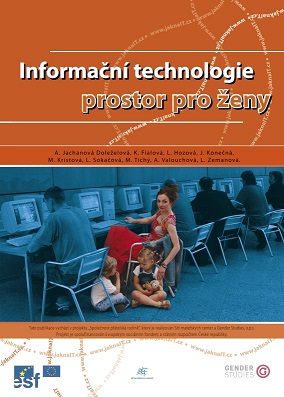
We kindly inform you that, as long as the subject affiliation of our 300.000+ articles is in progress, you might get unsufficient or no results on your third level or second level search. In this case, please broaden your search criteria.

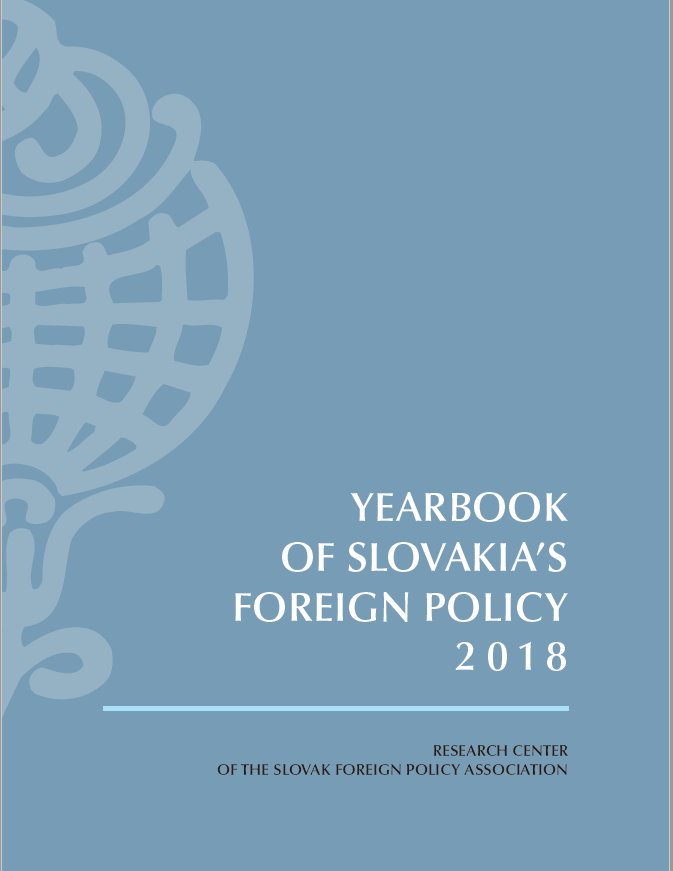
Slovakia faces having to significantly reduce industry and heating emissions. The funds that are to be provided under the EU Emissions Trading System may help. A carbon tax is another option in the game, but the private sector is against it. Slovakia is on track to meet its climate commitments for 2020 and 2030. According to the conclusions of a report by the International Energy Agency (IEA) on the Slovak energy sector from November 2018 “the positive outlook is partly thanks to the Slovak government’s proactive policy support, but also to emission targets that were set rather low initially.”
More...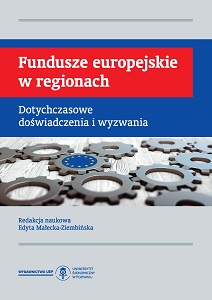
Artykuł ma charakter empiryczny. Jego celem jest identyfikacja związku między absorpcją funduszy unijnych (ogółem i per capita) przez jednostki samorządu terytorialnego a osiągniętym przez nie poziomem rozwoju społeczno-ekonomicznego oraz określenie znaczenia tego źródła finansowania dla badanych jednostek. Proces analityczny był oparty na informacjach pierwotnych (zgromadzonych za pomocą kwestionariusza ankiety od 909 przedstawicieli urzędów miast i gmin) i wtórnych (pozyskanych z Banku Danych Lokalnych). Poziom rozwoju samorządów określony został za pomocą syntetycznej miary rozwoju lokalnego (MRL), a do ustalenia zależności między jej rozkładem a wielkością środków Unii Europejskich pozyskanych przez gminy posłużyły współczynniki korelacji Pearsona i rang Spearmana. Na poziomie populacji generalnej istotny statystycznie związek korelacyjny (na poziomie 0,44) pojawił się jedynie w przypadku sum ogółem. Oznaczało to, że wzrostowi miary MRL towarzyszył umiarkowany wzrost absorpcji funduszy UE i na odwrót. Znaczenie środków unijnych oceniono na podstawie wskaźnika ich udziału w dochodach ogółem budżetów gmin oraz wyników badań ankietowych. Podejście takie wykazało, że choć środki unijne stanowiły niewielki odsetek dochodów gmin (średnio 4,79%), to zdaniem respondentów istotnie przyczyniły się do rozwoju badanych samorządów (W = 0,89). Ponadto możliwość aplikowania o fundusze miała znaczący wpływ na kształt planów inwestycyjnych jednostek uczestniczących w ankiecie (W = 0,88).
More...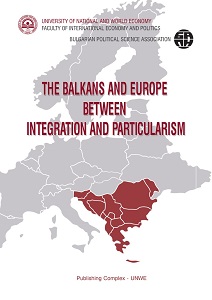
This volume is a collection of papers presented at the International conference The Balkans and Europe between Integration and Particularism: Challenges and Prospects, organized by the Faculty of International Economy and Politics at UNWE andthe Bulgarian Political Science Association and held in Sofia on October 25-26, 2018.The topic might seem trivial, for recently the focus of political and diplomatic attention has yet again shifted back to the troublesome South-Eastern part of Europe.Hence, numerous political and academic events dedicated to the Balkans, and to theWestern Balkans in particular, in the light of the EU integration processes in the region have been organized.
More...
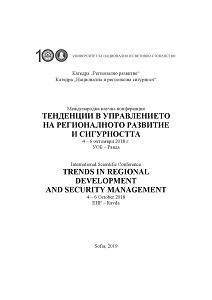
The object of the article is the award of the public procurement in compliance with the principles of the Treaty of the Functioning of the European Union (TFEU) and more specially the ones for free movements of goods, freedom of establishment and freedom to provide services and mutual recognition. From them comprise other principles, which are explicitly mentioned in Art. 2 in the Public Procurement Act – among them is the principle of free competition and this is the subject of this research. The purpose is to analyze the significance of the principle of free competition in public procurement award procedures both in the spending of public funds and for the successful management and implementation of the growth, sustainability, convergence and competitive development policies of the regions.
More...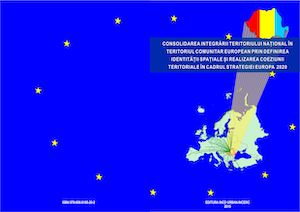
The chapter presents an analysis of theRomanian social house in an European context.
More...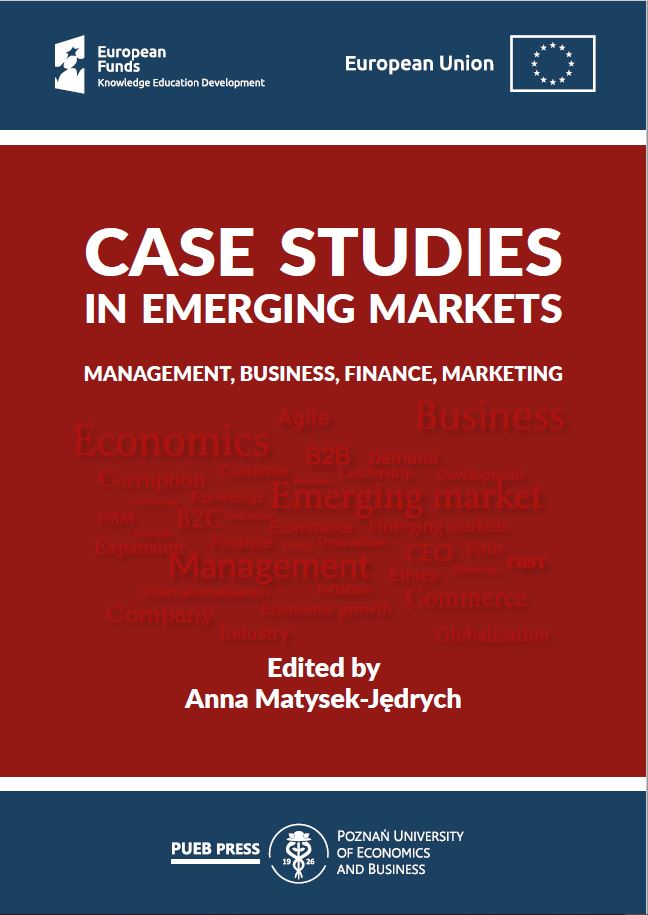
The author analyzes the China-US trade war in the case of Huawei by giving the Huawei company description, the history of conflict, the characteristics of the trade war image in Chinese media.
More...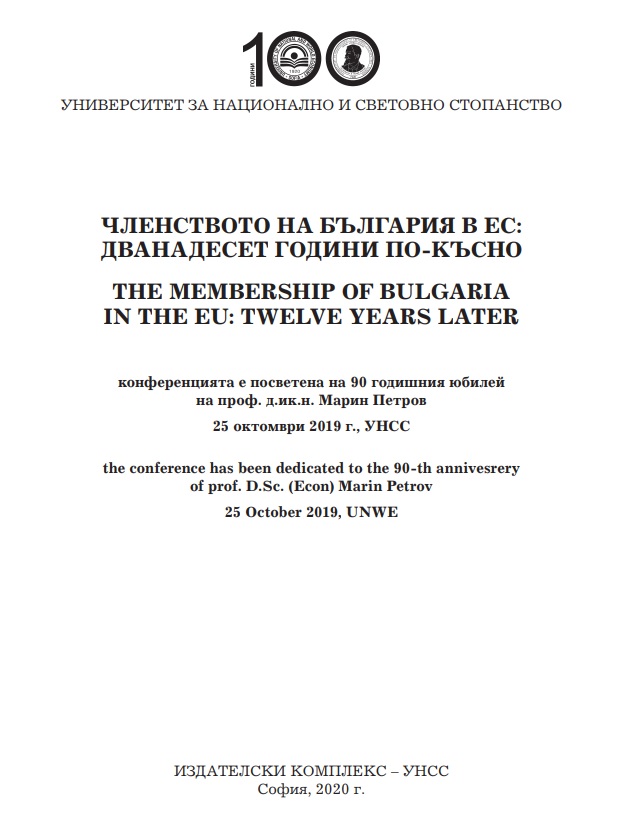
The report analyses the current situations and conditions for the existing income inequality in the EU. It presents various theoretical concepts and authors. The methodology utilized in the research includes systematic approach, comparative analysis, statistical approach.
More...
This paper studies the efficiency of tertiary education expenditure by a comparison between EU Member States in Central and Eastern Europe with respect to the effects related to the quality of education obtained through the application of the Data Envelopment Analysis (DEA) method. The paper introduces a new approach to measuring the outputs of tertiary education expenditure related to realization on the labour market and welfare. The results of the study show that, among seven CEE countries, EU member states, only in Romania efficiency of tertiary education expenditure is observed, while Bulgaria shows the largest deviation from the efficiency frontier.
More...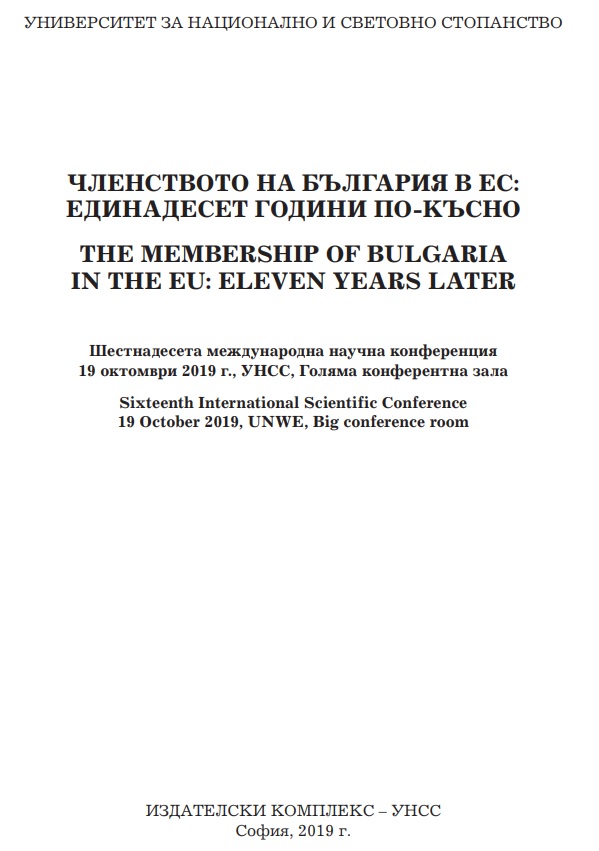
Since Bulgaria's accession to the European Union, European grant funding under the Rural Development Program has had a tangible impact on the agricultural sector, making the research of the problems in the area relevant and significant. The article examines, the development and implementation of the program. In particular, the perspectives and problems in implementing the support measures are analyzed, paying attention to their future developments. Based on the collected data and after analyzing the trends and problems conserning the subject, conclusions and recommendations are formulated in regard to the Rural Development Program for the period 2014-2020.
More...
After the so-called ‘dictatorship’ period in Albania the country becomes recipient of financial assistance from the EU in the 90’s. This assistance is allocated through the PHARE program as well as other international donor programs (supporting food security, humanitarian aid during emergencies, development of voting standards as well as education, including loans by the European Investment Bank). This article analyses the financial aid provided by the EU to Albania and Bulgaria prior to their EU accession as well as some difficulties experienced by Bulgaria during its pre-accession funds utilization made available through PHARE program. This research is conducted with the following important limitation: the analysis covers only the duration of the pre-accession instruments and funds and the issues experienced prior to the formal accession of Bulgaria to the EU.
More...
The European Union pursues common policies through its institutions in order to attain the Union's objectives. The main financial instrument that provides the conduction of the common policies is the European Union budget. The use of this instrument is subjected to the fulfillment of various conditions. The basic factors determining the European Union budget expenditure could be grouped into as law factors, financial and economic factors, political factors. Many of the factors are aimed at ensuring financial stability and proper use of the European Union budget but their multitude makes them practically difficult to apply. The diversity of the (non-exhaustively) presented factors could be considered also as source of problems emerging in the practice of the European Union budgetary process.
More...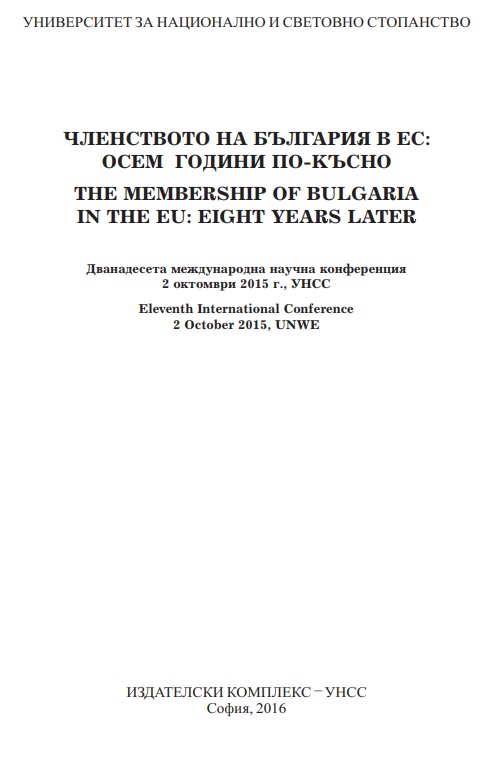
The European Union is facing a number of serious challenges which shall be solved through utilizing its own resources – human, financial and intellectual. At the same time, its institutional structure is increasingly criticized - both externally and internally, by the European and national politicians, and increasingly by the European citizens. The disapproval of the EU is aimed both at the functioning and the activities of specific institutions and at the way in which they interact in the general structure, as well as against the implementation of certain policies. This report presents some weaknesses identified by the three main EU institutions - the European Council, the European Commission and the European Parliament. The second part presents the main critical directions to the EU institutional system - bureaucratic inefficiency, democratic deficiency and inefficiency of the EU policies. Their nature and opportunities for improvement are analyzed.
More...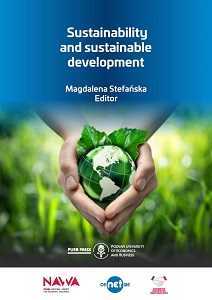
The aim of this chapter is to describe various determinants of sustainable development in the contemporary world, including those most important, such as globalisation, climate change, poverty versus unlimited consumption as well as limited exhausted access to resources—with regard to the goals of sustainable development. The other objective is to give the reader essential resources covering the topic from various viewpoints and a starting point for discussions about sustainability.
More...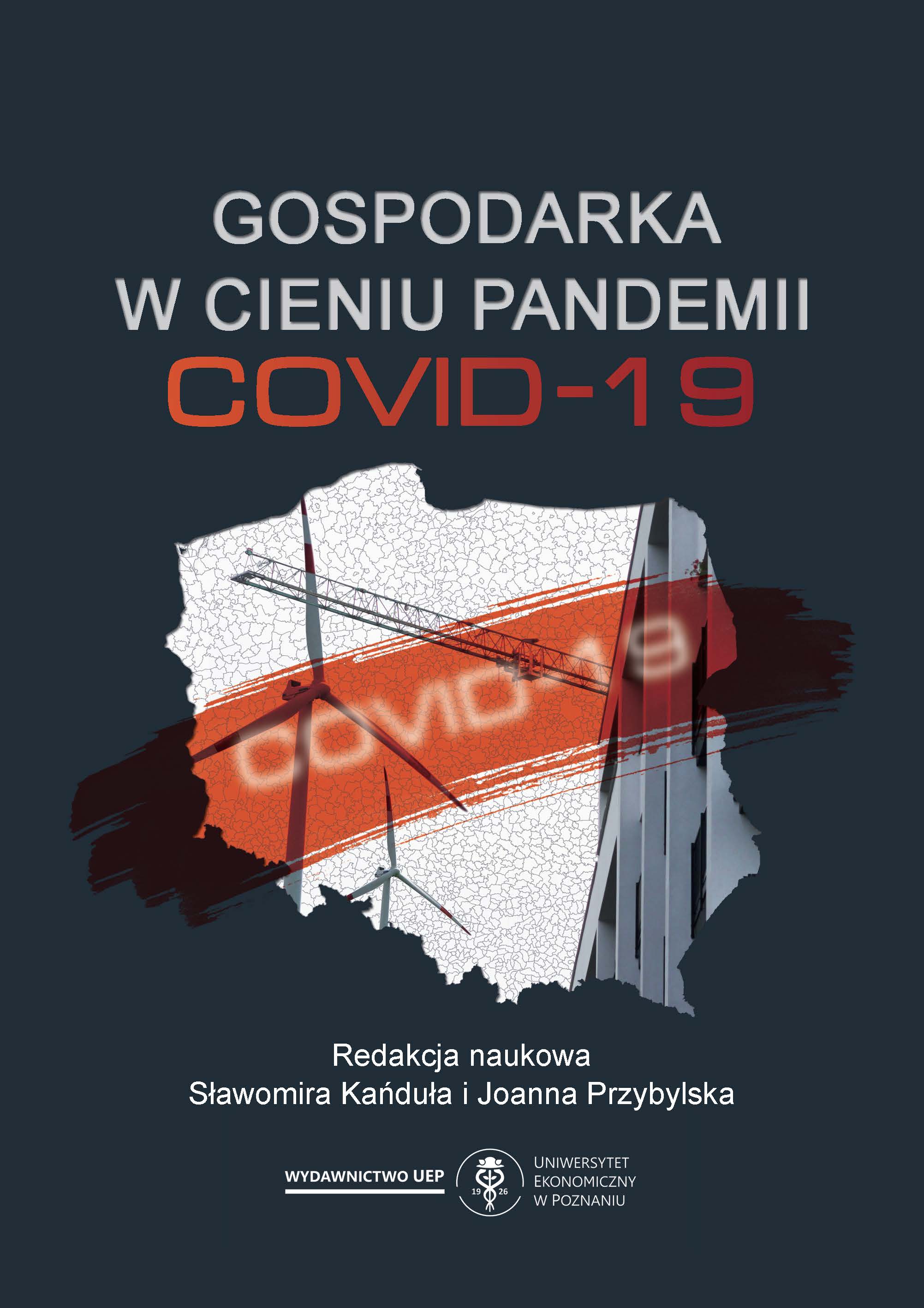
Purpose: The purpose of this chapter is to identify the initial responses of municipalities to the emergence of the COVID-19 pandemic. Design/methodology/approach: The research questions posed were: What types of budgetary instruments were used by municipalities during the first months of the COVID-19 pandemic in Poland? What was the scale of the loss of their current revenues and what was the amount of expenditures related to countering COVID-19? What were the sources of funding for these expenditures? Findings: Municipalities were, by necessity, on the front line of the fight against the effects of the pandemic. They used the available budgetary instruments (local taxes and fees, property revenues, budgetary expenditures) to limit the spread of the virus and reduce its negative consequences. These actions were not coordinated. The study revealed that revenue losses and expenditure increases due to COVID-19 were not as large as expected. Originality and value: The research in this chapter demonstrates that municipalities in Poland used different approaches to develop and implement policies to counteract the spread of the COVID-19 pandemic and mitigate its effects. The research shows that Polish municipalities played a leading role in the rapid response to the pandemic, although their actions varied and were uncoordinated.
More...
Purpose: The purpose of the chapter is to examine the evolution of the budget deficit and the sovereign public debt in Poland during the COVID-19 pandemic. Design/methodology/approach: The research question presented is: What is the impact of COVID-19 pandemic on the amount of state budget deficit and state public debt in Poland? The method of critical analysis of the literature on the subject was applied. Statistical data obtained from the Central Statistical Office and the Ministry of Finance were also presented. Findings: In 2020, the state budget deficit reached an unprecedented amount of 85 billion zloty, which is directly linked to the start of the COVID-19 pandemic, as the draft budget assumed no state budget deficit. Consequently, in 2020–2021 (Q1) there was a dynamic increase in public debt. Originality and value: The state budget result and the size of the public finance sector debt were lower than they should have been, because the vast majority of anti-crisis measures were financed from off-budget sources. Increased public spending increased the deficit and debt, but calculated using the Brussels method. The collected secondary data leads to the conclusion that the effect of the COVID-19 pandemic is also a decrease in the transparency of public finance in Poland.
More...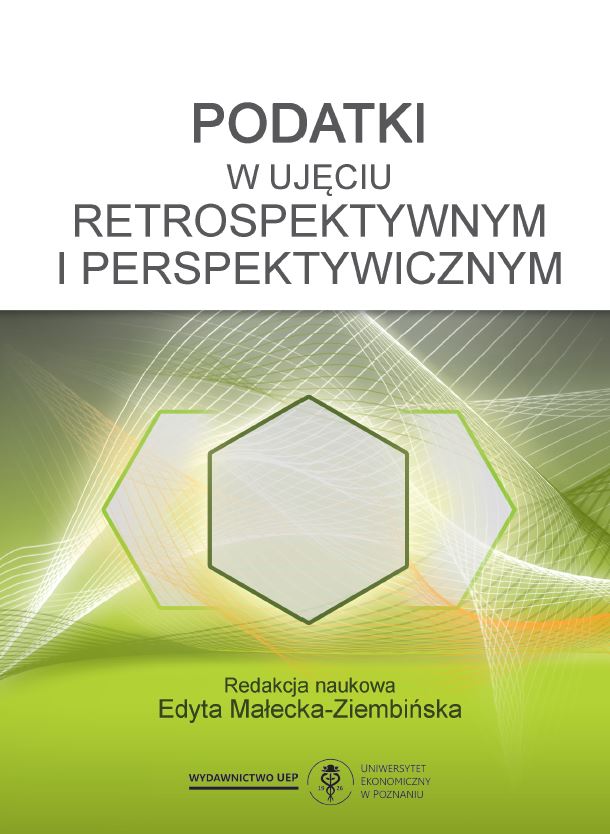
Purpose: The chapter identifies purposes and resonances of implementing new sugar-sweetened beverages tax. The empirical part presents responses of particular economic entity, such as manufacturers, brokers and retailers. In addition, in response to new conditions the model of consumers behavior was specified. Due to economic realignment, it is attempted to predict community-related after effects. Design/methodology/approach: Text indicates key issues related to implementation new regulations. It analyses challenges, which entities have to overcome toward prevention of potential losses. Findings: Sugar-sweetened beverage tax exerted the necessity on economic subjects to implement new counter-measures, which repeatedly were connected with enormous process changes in organizations. Additionally, it is seen, that new tax is being passed-through on final consumers, which influence on increasing their purchasing vulnerability.
More...
Purpose: The aim of the chapter is to present the latest corporate income tax (CIT) reform proposal developed by the European Commission in cooperation with the OECD. The proposed reform provides for the introduction of new rules in international corporate taxation, which are to contribute to increasing the efficiency of this taxation. As the initiative is supported by most OECD countries, including most EU countries, it is highly probable that it will be implemented. The chapter also presents a preliminary assessment of the implementation of the reform in the European Union countries. Design/methodology/approach: The used research method was the analysis of materials published by the European Commission and OECD by the end of August 2021, as well as their comparison with the currently applicable legal solutions or the current proposals regarding the taxation of trans national corporations (TNCs) in the EU. Findings: As a result of the analysis of the materials presented by the European Commission and OECD, the chosen direction of changes was recognized as justified, however, requiring consideration of the interests of less digitized economies. The chapter presents the potential positive and negative effects of the reform for the EU countries, as well as indicates the countries that can lose the most in terms of budget revenues from CIT.
More...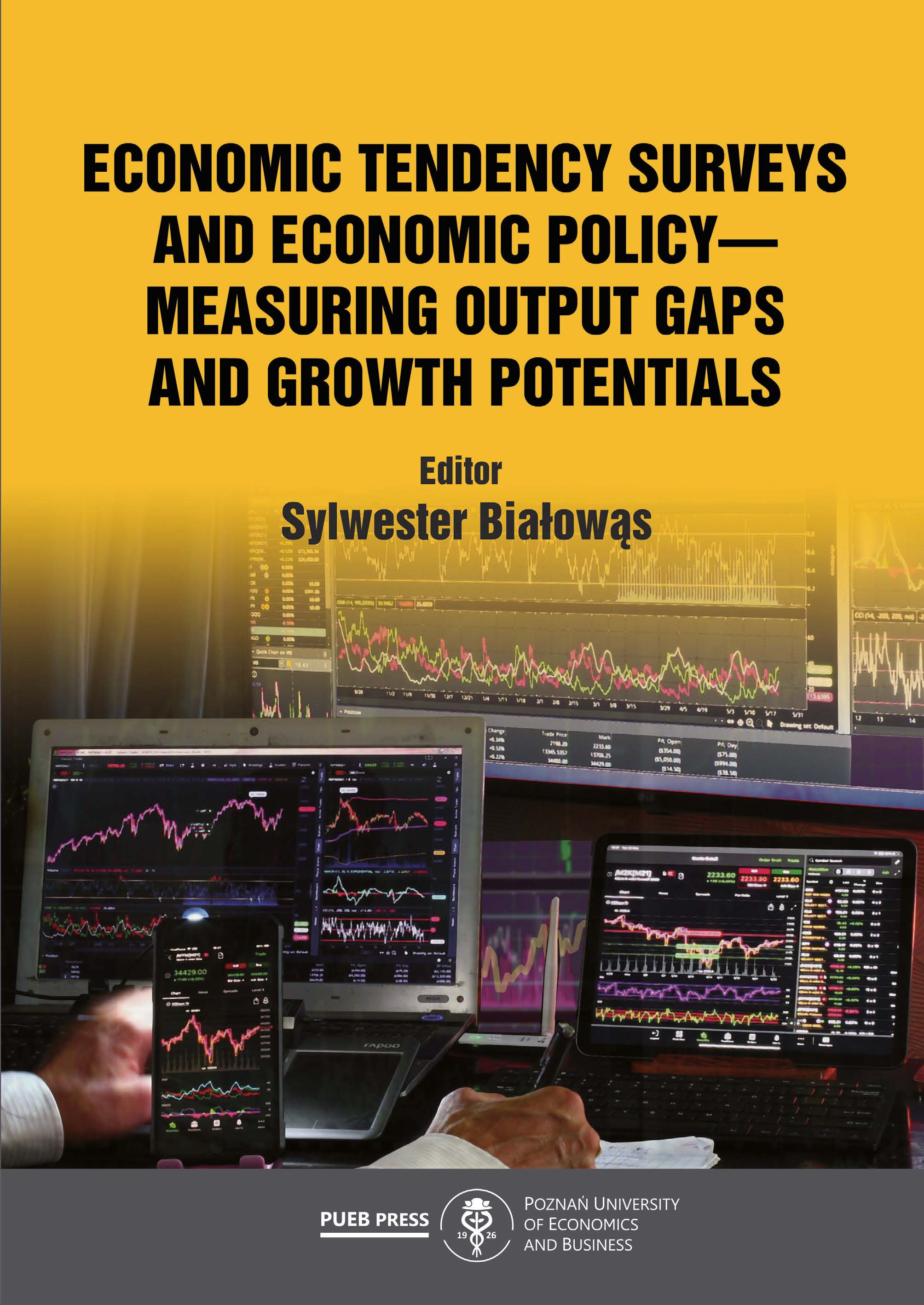
The aim of the article is to analyse the origin, course of inflation and scope of operation concerning the instruments of monetary and fiscal policy applied by the anti-inflation policy, as well as to evaluate their effectiveness for Poland’s economy in the years 2000–2021. To measure the relationship between decisions in the area of stabilisation policy and inflation, the authors carried out an econometric analysis using the dynamic autoregressive model with distributed lags. The parameters of the model confirmed that among the applied tools of monetary and fiscal policies, an anti-inflation nature was found between the monetary policy instruments and prices, and also linking budget expenditures with price level. Changes in budget incomes, according to the obtained results, were not conducive to price stabilisation in our economy. Anti-inflationary policy was dominated by monetary policy instruments. The anti-inflationary significance of fiscal policy has been much smaller since the beginning of the transformation of the Polish economy. Its anti-inflationary role increased in the period of difficulties related to the COVID-19 pandemic, in particular at the time of a strong increase in budget spending in the environment of rising price level.
More...